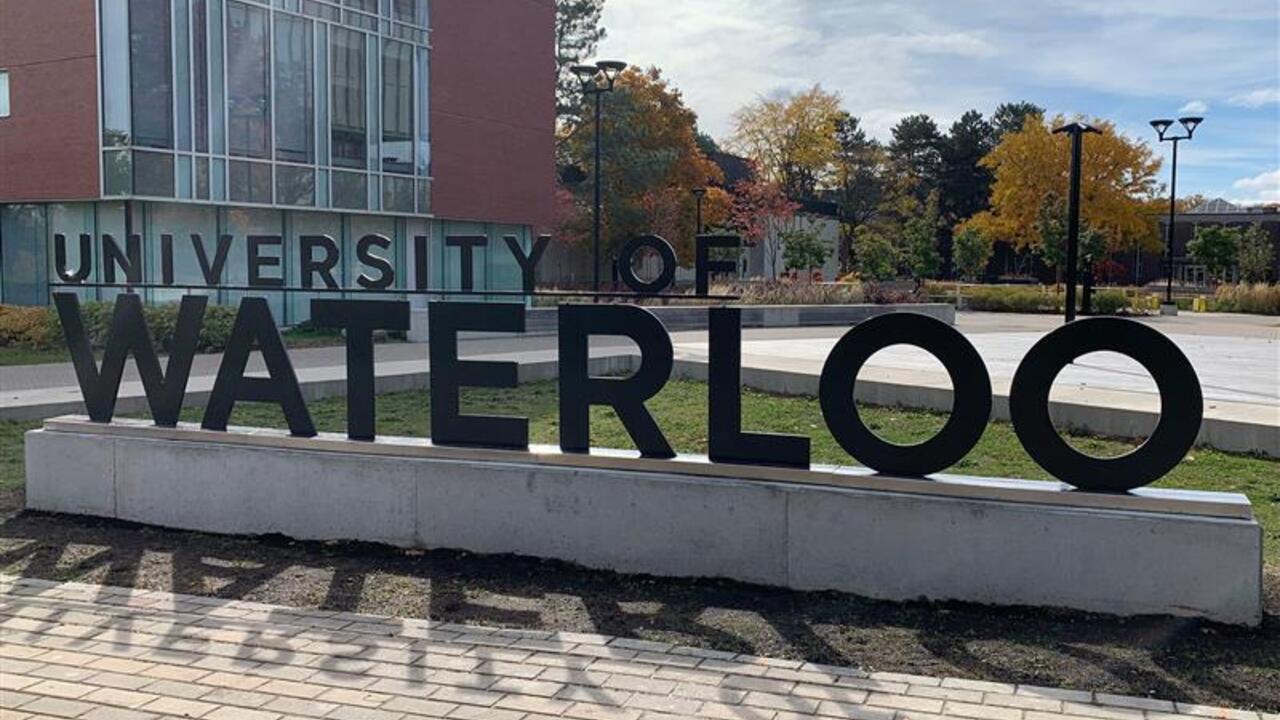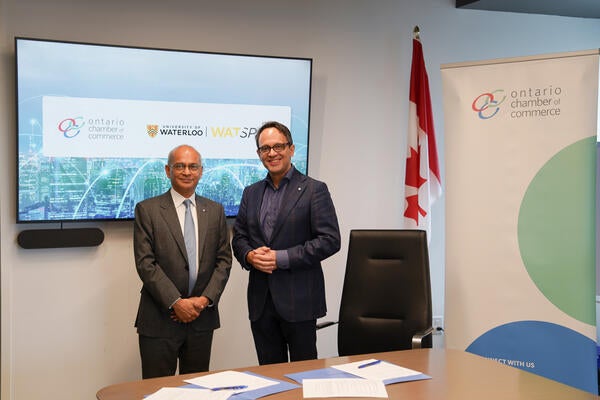
Waterloo researcher gets funding to refine sea ice classification system
A University of Waterloo engineering researcher has received funding to refine a breakthrough technology to more correctly identify sea ice.

A University of Waterloo engineering researcher has received funding to refine a breakthrough technology to more correctly identify sea ice.
By Media RelationsWATERLOO, Ont. (Wednesday, June 8, 2011) - A University of Waterloo engineering researcher has received funding to refine a breakthrough technology to more correctly identify sea ice, an important clue in tracking climate change in the North and South Poles.
David Clausi, a professor of systems design engineering, has been awarded a $150,000, 18-month grant for key development work on the Map-guided Ice Classification System (MAGIC). The strategic investment initiative is funded by a NSERC Network of Centres of Excellence, known as GEOIDE (Geomatics for Informed Decisions).
MAGIC is designed to read and interpret satellite imagery using ice maps provided by the Canadian Ice Service (CIS), a government agency based in Ottawa.
Clausi said he believes he and his research team are the first in the world to automate the interpretation of the imagery.
"It's been the holy grail of the remote sensing problems," he said. "Ever since we've been able to capture this radar data people have wanted to automate the process. We're the first ones to make these big steps. Other algorithms have been evaluated and they’ve been shelved."
Currently, the work of developing ice maps is performed manually at CIS. Clausi said that while CIS staff do a good job in creating the maps, detailed mapping cannot be produced by a human operator and computer vision algorithms are therefore necessary to do such tasks.
In 2005, Clausi was awarded a $130,000 strategic investment initiative grant to research remote sensing and computer vision technologies in order to better identify sea ice.
"The continued funding will let us take the algorithms we've developed in-house and make them part of the operational pipeline at Canadian Ice Services for generating ice maps," said Clausi, whose research interests include computer vision, digital image processing and pattern recognition.
Within MAGIC is a host of algorithms, including one that identifies ice types and their locations in the sea.
Ice maps are used primarily for two purposes. First, ice maps are critical for ships and ice breakers moving through ice-infested waters.
Ice maps are also used to monitor climate change, because seasonal volumes of ice are key indicators of the impact of global warming.
Knowing the extent of open water is critical for climate models since heat transfer from open water directly to the air is tremendous compared with heat transfer through an insulating ice cover. Since ice covers vast inaccessible ocean areas, only remote sensing and the application of computer vision can be used to effectively study ice phenomena.
As well, the maps assist with mining and oil exploration in the north. Knowledge of the ice types and their distributions provide tools for understanding shrinking polar bear habitats. MAGIC has also been used to interpret radar imagery of lake ice and Brazilian savannahs.
Clausi, who developed MAGIC with a number of Waterloo systems design engineering graduate and post-doctoral students and other researchers, is partnering with Canadian-company MDA that owns RADARSAT. RADARSAT is a Canadian satellite carrying a SAR (synthetic aperture radar) sensor that produces images that provide unique information compared with visible band cameras.
This is an excellent example of the university, industry and government synergy that is furthering research in Canada, Clausi said. "We have a group who knows what they’re doing technically, another group that has a vested interest in creating products based on the satellite data and an academic who is committed to developing systems to automate interpretation of satellite imagery containing sea ice. It’s a very nice fit."
About Waterloo Engineering
Waterloo Engineering is a multi-faceted engineering school with eight academic units, home to about 270 faculty members, more than 1,840 graduate students and 6,340 undergraduate students. More than 33,000 alumni have made their mark in industry, academe and the public sector, in Canada and around the world. For further information, go to www.engineering.uwaterloo.ca.
About Waterloo
The University of Waterloo, located at the heart of Canada's Technology Triangle, is one of Canada's leading comprehensive universities. Waterloo is home to 30,000 full- and part-time undergraduate and graduate students who are dedicated to making the future better and brighter. Waterloo, known for the largest post-secondary co-operative education program in the world, supports enterprising partnerships in learning, research and discovery. For more information about Waterloo, visit www.uwaterloo.ca.
Contacts:
David Clausi, professor, systems design engineering, 519-888-4567 ext. 32604 or dclausi@uwaterloo.ca
Carol Truemner, communications officer, faculty of engineering, 519-888-4567 ext. 33470 or ctruemne@uwaterloo.ca
John Morris, Waterloo media relations, 519-888-4435 or john.morris@uwaterloo.ca
Waterloo news release no. 34

Read more
President of Waterloo EDC says the University of Waterloo plays a pivotal role in region’s economic development on the global stage

Read more
The faculties of Science and Arts introduce a new theatre and performance course tailored to Science students

Read more
Waterloo’s WatSPEED to provide businesses with access to AI upskilling programs in new province-wide initiative
The University of Waterloo acknowledges that much of our work takes place on the traditional territory of the Neutral, Anishinaabeg and Haudenosaunee peoples. Our main campus is situated on the Haldimand Tract, the land granted to the Six Nations that includes six miles on each side of the Grand River. Our active work toward reconciliation takes place across our campuses through research, learning, teaching, and community building, and is co-ordinated within the Office of Indigenous Relations.